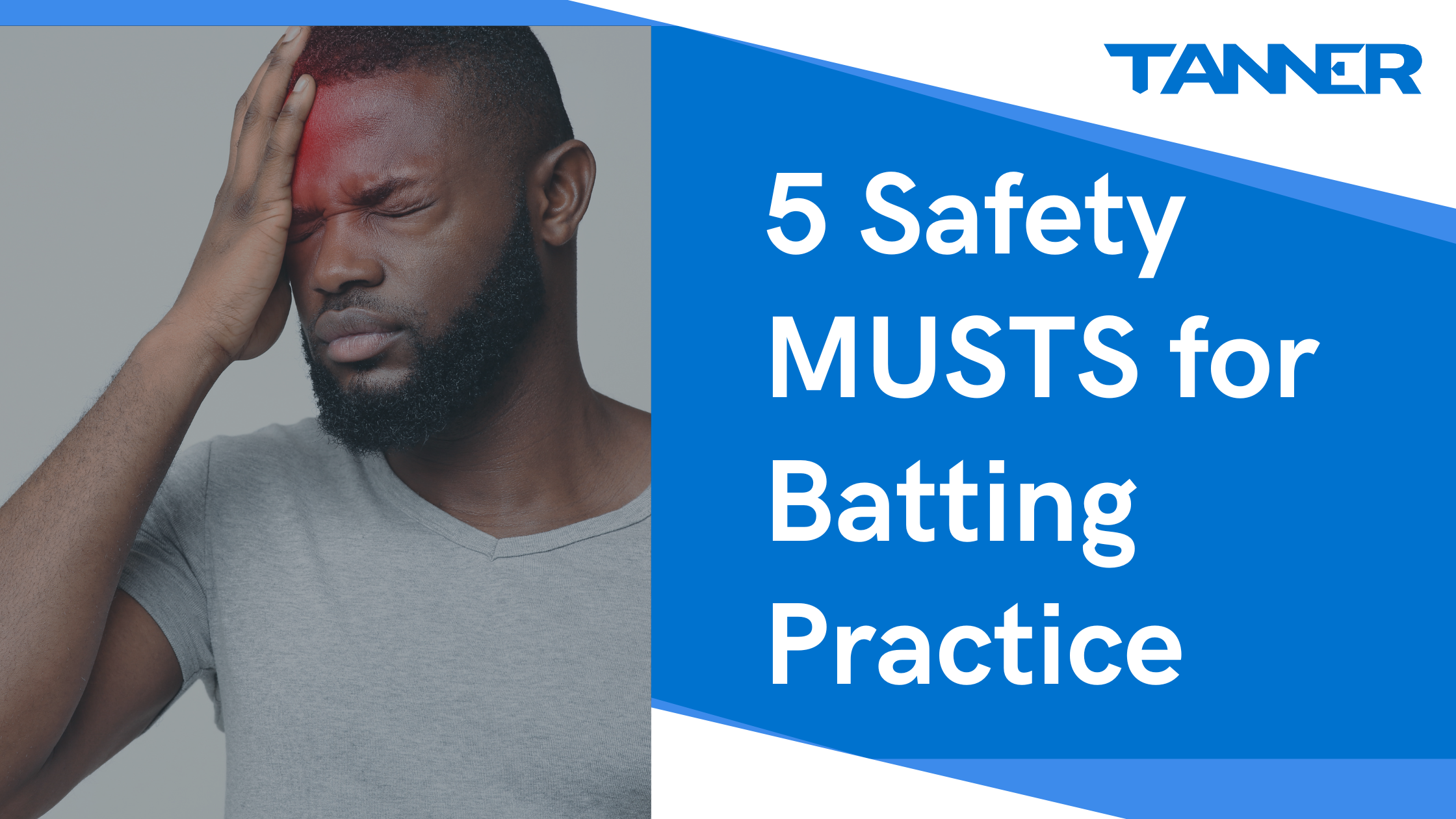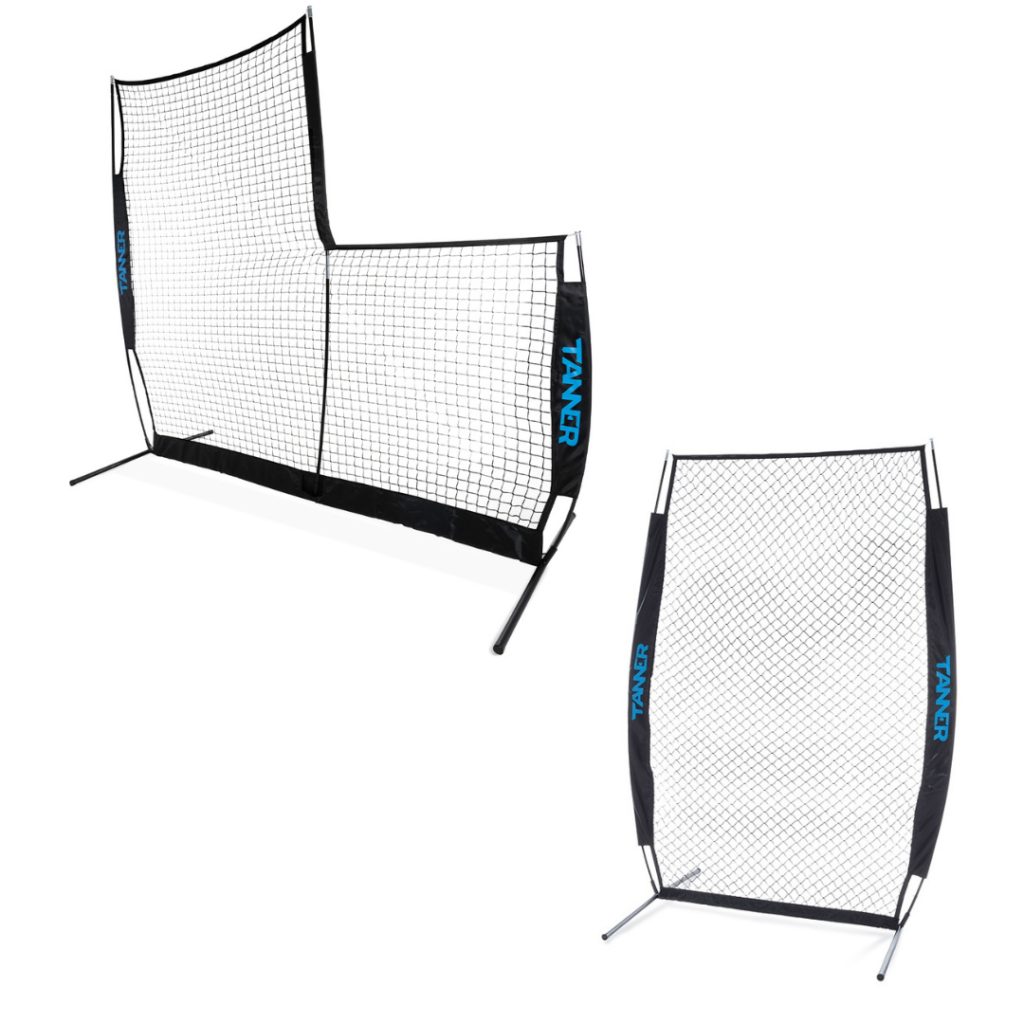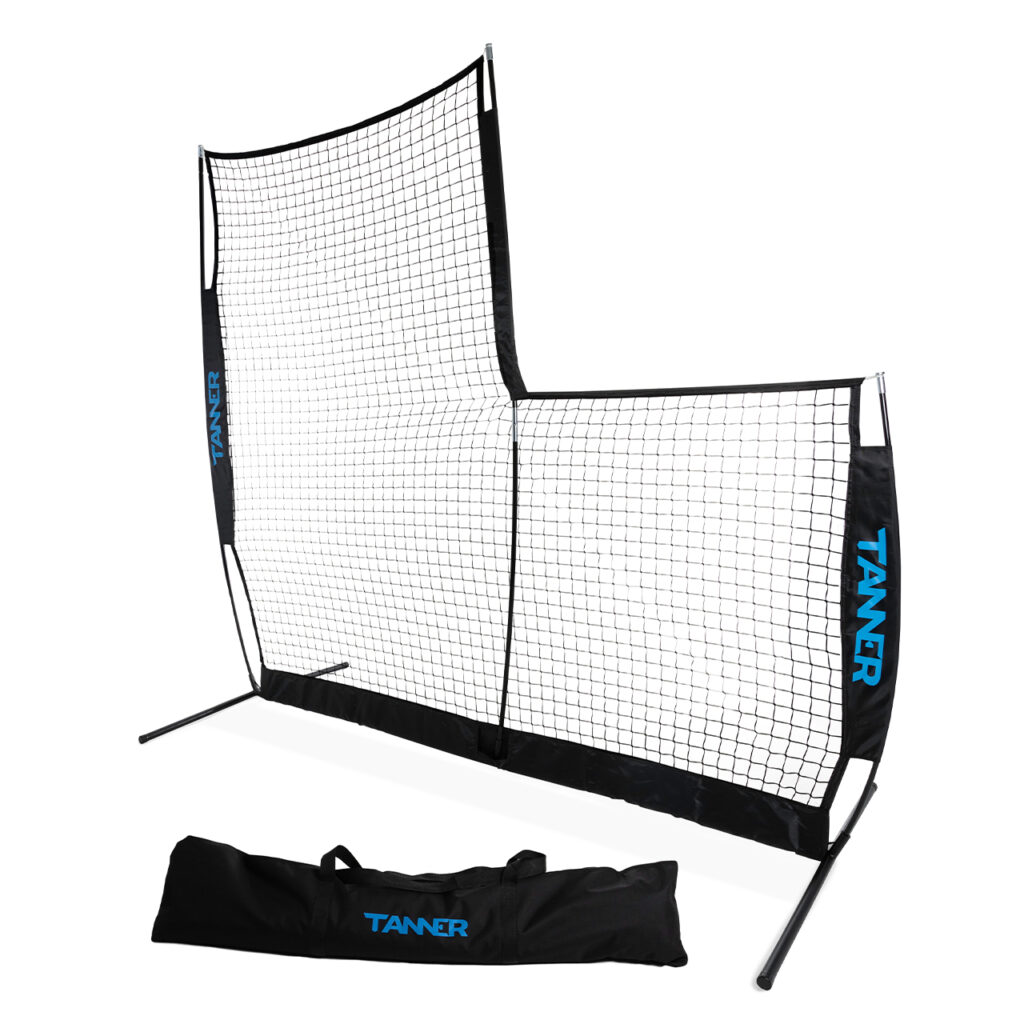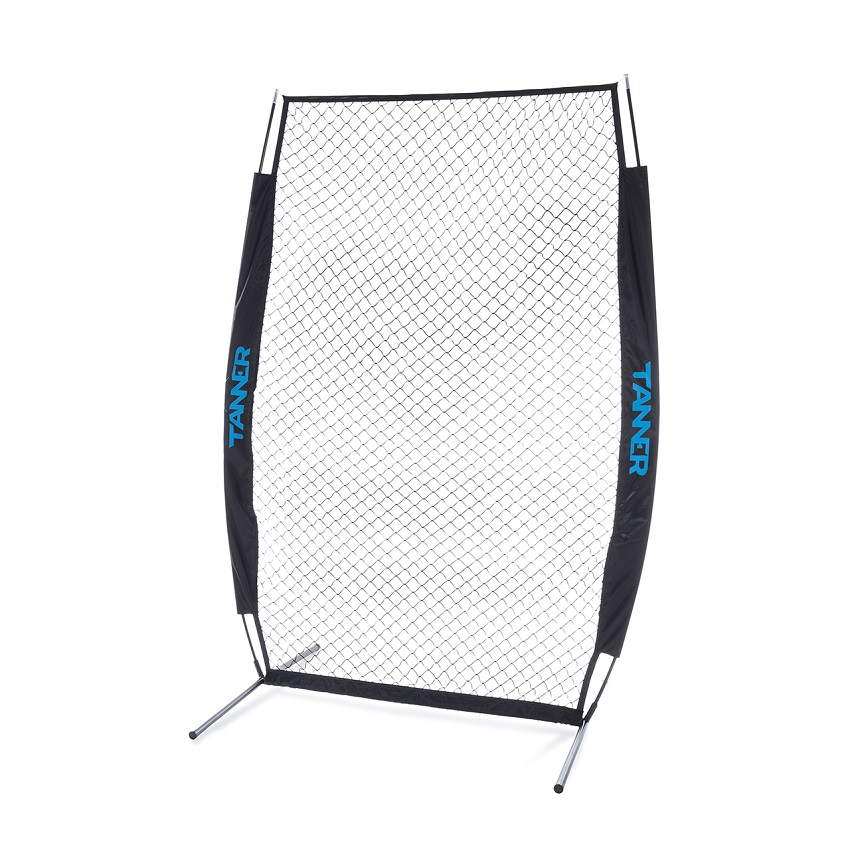Search Articles
Top 5 Safety Mistakes Using a Pitching Net

Est. Reading:
7 min
Updated: September 20, 2023
Article Contents
A protective pitching net for softball or baseball batting practice - either an L screen net or i screen net - is an absolute, must-have piece of baseball safety equipment at the field and for home practice.
Whether it's an athlete or coach throwing the ball, they are in the direct line of danger to potentially be hit and injured by a line drive if not protected by a pitching net.
Even with a pitching net, many injuries happen because the pitcher or coach throwing batting practice are either not using the pitching net correctly, or they get fatigued and fail to follow safety guidelines.
Below we’ll cover how to avoid the top 5 safety mistakes to avoid when using an L screen net or I screen net for protection during hitting practice.
Baseball Safety is No Joke
Accidents resulting in injury, disability, or even death have happened from a baseball or softball hitting vulnerable areas such as the neck or head.
- In 2006, a 12 year old pitcher was hit in the chest by a ball hit with an aluminum bat. He went into cardiac arrest and stopped breathing. By the time emergency services resuscitated him, his brain had been without oxygen for 15 to 20 minutes. He suffered permanent brain damage and is confined to a wheelchair.
- In 2007, a 35-year-old man was hit in the left temple by a line drive and died shortly after. He was survived by his 2 children and wife, who was pregnant with their 3rd child.
- In 2014, a Long Island Little League coach died after he was struck in the head with a baseball. He was throwing batting practice from the mound when one of his 12-year-old players hit a line drive that struck him in the head.
Other, non-fatal injuries are more common and include injuries to the hand, wrist, arms, eyes, concussions, broken facial bones, and much more.
So as you can see, softball and baseball safety is no laughing matter. Nobody wants to see a joyful, fun moment turn tragic.
The good news is that taking some simple precautions goes a long way toward preventing injuries.
Why Do I Need a Softball or Baseball Pitching Net?
An L screen net and I screen net are protective nets used during batting practice to stop line drives from hitting the batting practice thrower or pitcher.
Is this really necessary? According to the laws of physics, the answer is YES.
Because the batting practice pitcher is so close to the hitter, it’s virtually physically impossible for the thrower to react in time to catch or avoid a come-backer.
According to the Child Safety Center, “a pitcher needs at least .39 seconds to react to a batted ball. But balls hit with aluminum bats frequently travel faster than 100 mph, which does not allow enough time for a pitcher to react:”
“The Average Available Pitcher Reaction Time (APRT) of a ball traveling at 93 mph takes 0.4 seconds to travel 54 feet. The pitcher’s mound is exactly 60 feet, 6 inches away from home plate. With speeds of 100 mph plus, the pitcher has less than 0.030 seconds to react to a come-backer, which is impossible.”
And that's on a pitcher’s mound. In batting practice, the pitcher is often much closer than 60 feet away. This is why the only way to stay safe is to stay behind a protective screen.
Which Protective Screen Should I Get?
It may seem confusing at first, but there are distinct times when you’ll want to use an I screen net vs an L screen net. Here is when to use the L screen vs the I screen:
- An L screen net (shaped like an "L") is used for regular throwing over the short side of the net - either overhand toss or for regular pitching. (The L screen net can be used like an I screen net if you flip it around and use the tall side.)
- An I screen net is used for underhand toss, seated overhand toss and softball pitching. It is also commonly used as a protective screen between drills.

The 5 Top Mistakes to Avoid when Using a Pitching Net for Baseball or Softball
An I-screen or L-screen can’t protect you if you don't use them properly.
These are the 5 most common mistakes parents, coaches or other players make that can cause injury during batting practice.
- Mistake #1 - Looking around the net instead of through it
This is the most common reason people end up with serious injuries to the face when throwing batting practice.
Most people don’t like looking through the net, so they poke their head around. Now your face is open to the ball. As stated earlier, it’s virtually impossible to dodge a baseball coming off a bat at that close distance. This is true even for adults who are throwing to young children.
So if you value your eyesight, look through the net… NOT around it.
- Mistake #2 - Leaving your hand exposed
When underhand flipping, make sure after you flip the ball you don’t just stand there watching and leave your hand exposed. Take your hand behind the net immediately. Many people are injured in the hands or wrists by neglecting this simple rule of thumb.
- Mistake #3 - Standing too close to the net
Every protective pitching net will vary somewhat when it comes to how much the net gives and flexes. Understand how close you can be to the net without the ball hitting you through the net. For a portable L screen pitching net, we suggest at least a foot of clearance between your body and the net.
- Mistake #4 - Leaving your shoulder or back exposed
Often people leave their shoulder or back exposed without realizing it. The best way to avoid this is to ask the batter if your whole body is behind the screen.
- Mistake #5 - Beware of ricochet in batting cages
If you are hitting on a field, this is not typically a problem. However, in a batting cage there are often metal poles. When a line drive ricochets off a metal pole, the result can be tragic. If you know your cage has metal poles, a simple solution is to hold your glove over your head with each throw.
Now that we know why we need a protective pitching net screen for batting practice, and we know what mistakes to avoid, let’s talk about some options.
Tanner Portable Pitching Nets for Safety
At Tanner Tees, we care deeply about helping you create more productive and SAFE training sessions. That’s why we offer Tanner brand high-quality portable L screen nets and I Screens net. (Plus the Pitchers Pocket 9 Hole Pitching Net and the Tanner Batting Net, of course.)
Both of our protective pitching nets feature…
- Durable
- Reliable
- Easy, fast setup
- Lightweight & Portable
- Carry bag with shoulder strap

Tanner L-Screen Net
The Tanner flexible frame 7'x 7' portable L Screen net is a great equipment addition for home practice and for coaches who need durable, yet portable safety equipment to protect pitchers and players during BP. Set up is fast and simple - just attach the poles to the frame, then bend the poles to thread the net onto the frame. Works for right-handed and left-handed pitchers. Players and coaches love the added protection provided by this softball and baseball L Screen Net.
- L Screen nets are trusted by teams as protective barriers, to section off the field or keep a coach/pitcher safe during on-field BP.
- Flexible-frame L Screen nets are an important on-field training aid and can be moved easily throughout practice.
- The L-Screen protective net can double as an I-Screen net, making it a hard-working addition to your training equipment.

Tanner I-Screen Net
The Tanner flexible frame 4'x 7' I Screen net is a great addition to your home practice area and for coaches who need durable, yet portable safety equipment to protect pitchers and players during BP and front toss. The net and frame break down into a convenient travel bag. Set up is fast and simple - just attach the poles to the frame, then bend the poles to thread the net onto the frame.
- Compact size is large enough to protect players but won't be in the way during practice.
- Flexible-frame I Screen pitching nets are versatile hit training aids because they can be moved easily throughout practice.
- I Screen pitching nets are trusted by teams and for home practice to serve as protective barriers, to section off the field and to keep a coach hitting fungo safe from on-field BP.
Pitchers Pocket 9-Hole Net
If you're looking for a net to help with pitching accuracy, see if the 9 Hole Pitchers Pocket and Pitchers Pocket Pro are right for you.


